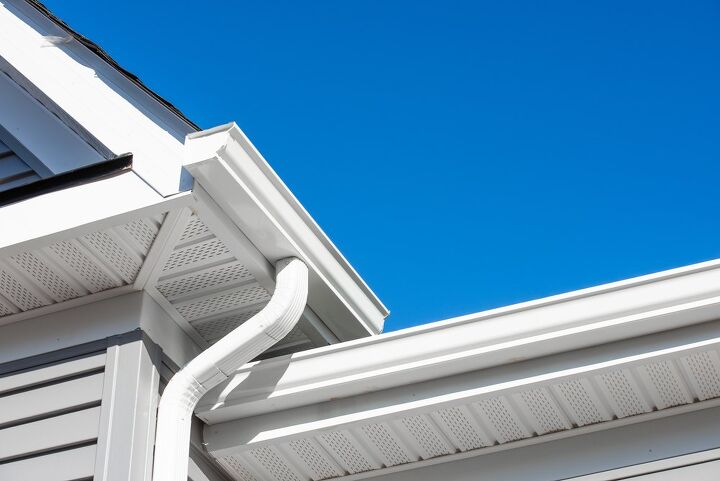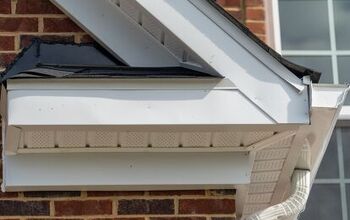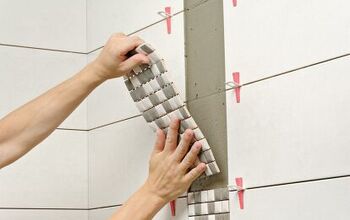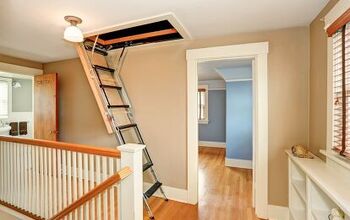Are Gutters Required By Code?

Watching the rainwater pour off your roof, splash against the walls of your home and run down into the gutters can give you pause. Where roof surfaces meet to form valleys, literal waterfalls can result from hard rain. Many people wonder if gutters are required by code with all the other codes in place to protect your home, many people wonder if gutters are required by code?
The International Residential Code (IRC) does not require guttering on residential structures. However, the IRC does regulate tine construction, materials and installation of gutters if a homeowner elects to install gutters. Many local building codes also require permits and inspections of gutter installations. In addition, some jurisdictions require gutter companies to be licensed, bonded and insured.
Gutters make sense. There are many reasons that gutters should be installed on any home. Reasons range from the convenience of an entryway that doesn’t give you a shower when you enter your home to protecting your home’s foundation. Gutters offer more than just convenience and protection. When coupled with a rain catchment system, you can enjoy some savings on your water bill.
Do You Need Gutter Installation Services?
Get free, zero-commitment quotes from pro contractors near you.

What are the Advantages of Gutters on Your Home?
Gutters on the eave of your roof offer several advantages. Some of these advantages are important to the health and care of your home. Understanding how gutters can protect your home and, possibly, increase its value can be an attractive argument. Some of these advantages include the following.
Gutters Protect the Foundation of your Home
An immense amount of water can run from your roof during a rainstorm. According to the American Rainwater Catchment System Association, a roof can capture 623 gallons of water per 1000 square feet of roof surface during a one-inch rain. If your roof is 2,000 square feet, you can expect over 1,200 gallons of water to pour off your roof.
Unless the water is directed away from your home’s foundation, damage to the soil and the foundations can occur. The following are some of the problems from rainwater running off your roof.
Soil Erosion and DestabilizationRainwater not directed away from the foundations of your home will erode the soil around and under the foundation. This is particularly true of pier and beam foundations and slab style foundations.
Erosion around your home’s foundation causes water to pool, allowing moisture to wick into the foundation and, possibly, into the siding and structural members. This water pooling can raise the moisture level of the soil, attracting insects that can also damage the wood framing.
Damp soil has a tendency to compact and settle. The setting of the soil can undermine the foundation and lead to subsistence. This subsistence can cause the foundation to settle, crack and destabilize. The destabilization can lead to uneven floors and even structural failure.
Damage to Basement WallsWater allowed to pool next to the foundation and walls of a basement will eventually find its way into the basement. Most basement walls are constructed of porous concrete blocks. Even the best sealants applied to concrete block walls will eventually leak if exposed to water.
Under the worst circumstances, the water loads may be great enough to cause flooding in the basement. Many homes with basements are equipped with sumps pits and sump pumps. However, if the flow of rainwater into the basement exceeds the pump’s capacity, flooding can still occur.
Damage to Brick, Mortar, and SidingsStanding water or rainwater splashing against the brick veneer of your home can cause massive damage over time. The water can wash the mortar away, exposing your home’s substructure to weather Stucco is not immune to rainwater damage near the bottom of your exterior walls. Gutters can help prevent this kind of splash damage.
Wooden siding is especially susceptible to this kind of damage. Any home with wooden siding should be equipped with gutters to protect the siding. Water can stain wooden siding and brick veneers. Wooden siding can also be attacked by insects if moisture is present.
If I Install Gutters, What is Required?
While the IRC does not mandate gutters on homes, it does regulate the materials, construction and installation of gutter systems. Some jurisdictions are now adding gutter requirements to the building codes. These cities and counties reflect the IRC for gutter installation on new homes. If you decide to retrofit gutters to your home, these are some of the recommendations based on the IRC.
Chose the Best Gutter Materials
The choice of gutter materials depends largely on the end-use of the water. Some homeowners collect the rainwater for use in their landscape and gardens. Some systems even collect and treat rainwater for use as potable water.
Most residential gutter systems are made of aluminum. Professional gutter installers can fabricate gutters on sight to the exact length needed for any size home. This seamless style of guttering is available in many colors to better match the exterior of your home.
We recommend aluminum seamless guttering as the best type of gutter for any residential installation. Aluminum guttering is economical and durable. If properly maintained, aluminum guttering can last many years.
Ensure that Gutters are Properly Sloped
The installation of your gutters is just as important as the materials from which they are made. If the gutters are not properly installed, they may sag, fail to properly move water to the downspout, or leak. Any of these situations can damage your home.
Gutters must be sloped properly toward the downspouts to ensure proper water flow. In general, gutters should drop one-eighth inch per foot of gutter. In practice, this limits the distance between downspouts.
Gutters Should be Securely Attached to the Eave of your Home
There are many different methods of attaching gutter to the eave of your house. Insufficient supports allow the gutter to sag under the weight of the water it is carrying. The best overall gutter support systems hang from the eave of the house and hold the gutter from the bottom. Unfortunately, most homeowners don’t like this style of gutter hanger system because of the looks.
Most homeowners prefer the hidden style of the gutter hanger. This type of gutter hanger system clips to the front lip of the gutter and to the back lip. A screw or spike is driven from the gutter’s front into the eave. A downside of this style of gutter hanger is the lack of support at the bottom of the gutter.
Downspouts are Part of the Gutter System
The downspouts on your gutter system are an integral part of the protection for your home. The downspouts must be spaced close enough together along the gutters to adequately handle water flow. If there are not enough downspouts for the gutter length, the gutter can overflow, negating its value.
Downspouts should be sized properly for the expected water flow from the gutters. The downspouts must also be securely attached to your home. In addition, the joint between the downspout and the gutter must be water-tight to prevent leaks.
Lastly, don’t terminate the downspout directly against your home. Extensions to your downspouts, or other conductors, should direct the water at least five feet away from your home. The goal is to prevent water from pooling around the foundation of your home.
Gutters Require Regular Maintenance and Inspection
Like any other part of your home, gutters require regular inspection and maintenance. In general, you should perform these kinds of tasks at least once a year to ensure your gutters and downspouts operate properly.
- Inspect the gutters from below and from above. Falling limbs may bend or damage the gutter. Ice from winter storms may bend the gutters or cause them to sage. Check the joints for leaks. Ensure the downspouts are securely attached to the gutter and the wall.
- Clean your gutters regularly. If your home enjoys many trees, leaves can build up in the gutters if they are not protected by leaf guards. Check the downspout openings for clogs. Bird nests are particularly bad about clogging downspout opening. In some areas, dust may build up in the gutters. This can increase the weight of the guttering and cause the brackets to bend or sag.
- Inspect the supports and brackets that support the gutter. Replace or repair any brackets that are bent or broken.
- Check the extensions on your downspouts. If you use a spring-style roll-up extension, check them for proper operation. Keep them straight and firmly attached to the downspout if you use static extensions.
Maintenance is an ongoing process. Gutters are exposed to the ravages of wind and water daily. A regimen of proper inspection and maintenance will keep your gutters protecting your home for many years to come.
Do You Need Gutter Installation Services?
Get free, zero-commitment quotes from pro contractors near you.

Gutters – Not Required but Highly Recommended
The model building codes such as the IRC don’t mandate gutters on new construction. Some local jurisdictions are now adding this requirement to their local building codes. We recommend that every home be guttered for the protection of the home.
Professional gutter installers are your best option. These professionals can custom fabricate seamless gutters for your home at a reasonable cost. Using a professional ensures that the job is professionally done and the installation meets relevant building codes

Dennis is a retired firefighter with an extensive background in construction, home improvement, and remodeling. He worked in the trades part-time while serving as an active firefighter. On his retirement, he started a remodeling and home repair business, which he ran for several years.
More by Dennis Howard



























